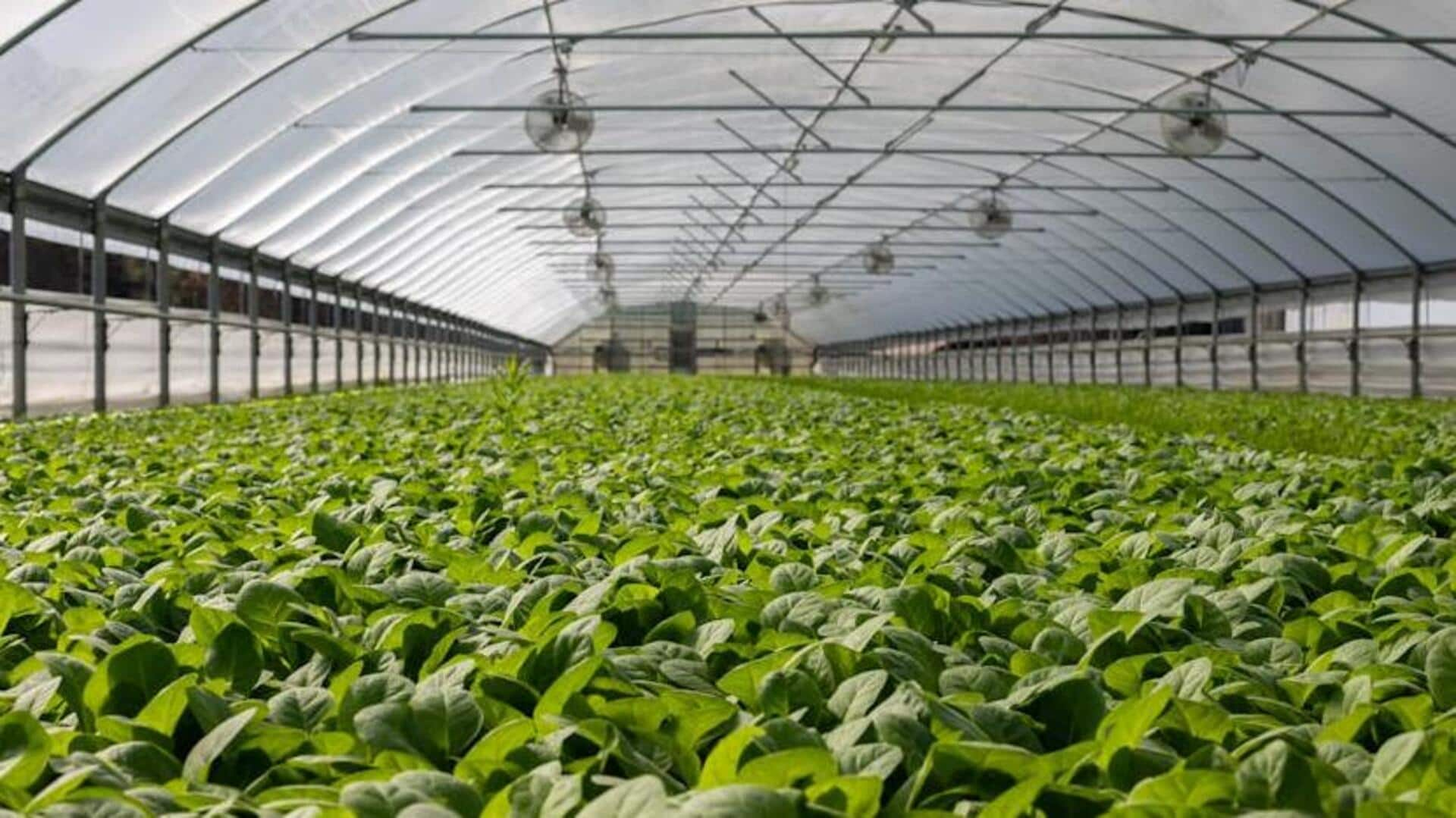
Enhance your greenhouse for optimal plant health
What's the story
Establishing a conducive environment in your greenhouse is crucial for the well-being and productivity of your plants. This article offers actionable advice to optimize conditions within your greenhouse, guaranteeing that your plants get the ideal amount of light, temperature, humidity, and nutrients they require to thrive. By applying these strategies, you can significantly increase plant growth and reap a plentiful harvest.
Light management
Optimize light exposure
Plants in a greenhouse depend on sufficient light for photosynthesis, growth, and development. To maximize natural light exposure, carefully consider the orientation of your greenhouse. A south-facing position ensures the most sunlight year-round. If natural light is limited, particularly during winter months, supplement with artificial lighting. LED grow lights are energy-efficient choices that deliver the necessary spectrum of light for plant health while minimizing electricity costs.
Temperature control
Maintain ideal temperature
Temperature is key for greenhouse plants, aim for 65 degrees Fahrenheit to 75 degrees Fahrenheit during the day and above 50 degrees Fahrenheit at night. Regulate these temperatures with proper ventilation, heating, and cooling systems. On hot days, use vents or fans to remove excess heat, and during cold nights or winter, a heater is essential to maintain optimal temperatures.
Humidity regulation
Regulate humidity levels
Maintaining the right humidity levels inside a greenhouse is crucial to prevent diseases and promote healthy plant growth. The ideal range is between 40% and 70%, depending on the type of plants you're growing. If you need to increase humidity during dry periods, use humidifiers or misting systems placed strategically around your plants. Conversely, to reduce excess moisture in the air, use dehumidifiers or ensure proper ventilation is implemented.
Nutrient management
Ensure proper nutrition
Greenhouse plants typically require more frequent fertilization than their outdoor counterparts because of the restricted soil nutrient supply. It's crucial to regularly test your soil and modify your fertilization practices depending on the nutrient concentrations. Choose balanced fertilizers that include essential elements like nitrogen, phosphorus, potassium, magnesium, and calcium. Over-fertilization should be avoided as it can lead to nutrient burn or imbalances. Stick to the recommended application rates.
Pest management
Implement pest control strategies
Pest populations in greenhouses can explode rapidly because the conditions are perfect for them to thrive. Regularly examine your plants for any indications of infestation, including discolored or damaged leaves or stems. Employ biological control techniques to effectively manage pests without damaging your plants or the environment. This can be accomplished by introducing beneficial insects such as ladybugs or by using organic pesticides.